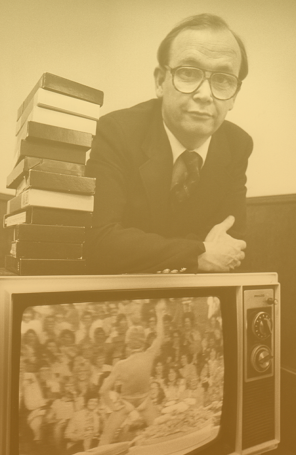From Planned Parenthood to Pro-Life Activist
Sign up for a six month free
trial of The Stand Magazine!
Though she grew up in a pro-life home, Abby Johnson was captivated by the well-practiced talking points of Planned Parenthood representatives who visited the university she attended. In no time, she became a volunteer, escorting women into the clinic.
Fast forward, and a few years later, Johnson was one of Planned Parenthood’s youngest clinic directors. But everything changed when she observed an in utero baby fighting for life during an ultrasound-guided abortion.
After eight years and 22,000 abortions, she could no longer deny the reality that innocent babies were being put to death on her watch.
She was done.
Today, Johnson is one of the nation’s most influential advocates for life. Her 2010 tell-all book, Unplanned, is a dramatic narrative of her journey from an abortion provider to pro-life activist.
Captivating movie
Film director Cary Solomon was sitting in a coffee shop one day when a woman dropped Unplanned on the table in front of him and challenged him to produce a movie based on Johnson’s story.
It seemed to him an odd encounter, as the issue of abortion was nowhere on his radar. But after prayer and consideration, the film Unplanned began to come to fruition.
“We didn’t set out to make a ‘Christian’ movie,” said Solomon. “We set out to make a movie based on what happens in the abortion chamber. We didn’t have to lie or propagandize. We just had to tell the truth.”
Unplanned contains a few mild profanities, and no nudity or sexual content. So producers were shocked when it received an R rating. MPAA had unwittingly acknowledged the degree of violence that comes with killing a human being in the womb.
The irony is astonishing, considering that 13 states allow a minor to have an abortion without parental knowledge. And in the 37 states which require some level of parental involvement, an alternative process allows minors to bypass parental authority.
Scenes that expose the truth about abortion are difficult to watch, both the procedure itself and the bloody “normal recovery” for a woman who uses the RU486 abortion pill. Parents are advised to see it first and consider watching and discussing it with older children.
The well-produced drama skillfully balances truth with grace and mercy. Resources are cited for those touched by abortion to receive help and healing.
Casting surprise
“They warned me,” said Ashley Bratcher, who played Johnson in the film.
“You’re probably going to get blacklisted,” producers cautioned. “This could end your career.” But her position on abortion was sealed when she read Johnson’s story and was certain it was worth the risk.
Days after Bratcher started filming, her mother told her how close she had come to aborting Bratcher decades earlier. Yes, her mom decided against aborting Bratcher – while lying on the abortion clinic table.
“It blows my mind that I never knew that about myself,” said Bratcher in tears, “until after I had stepped into this role to…tell one of the greatest pro-life stories of all time.”
CAUTION: “This is normal?”
Graphic scenes in Unplanned:
- The ultrasound-guided abortion (on screen, computer-generated image), and the “product of conception” (the baby) simultaneously being dismembered and expelled into a glass container.
- Johnson’s frightening, yet common, bloody experience with the RU486 abortion pill – intense pain and hemorrhaging.
One abortion clinic prepares RU486 victims with these warnings:
“[Blood] clots may be as big as a lemon. Bleeding may be very heavy…You may also experience diarrhea, nausea, and vomiting. This is normal…If you feel your health is in danger call or go to the nearest ER.”
Unplanned will be released in theaters March 29. Learn more at unplannedfilm.com.
Interesting facts:
The actor playing the abortionist for the ultrasound-guided abortion is Dr. Anthony Levatino who has performed over 1,200 abortions. He is now a powerful voice for life, educating individuals and courts about the actual abortion procedure. Also in the scene is Julie Ann Wilkinson who was an abortion clinic nurse for years. It wasn’t until recently that she had the courage to come forward about her former life. See her story in the May 2015 AFA Journal, and watch for her interview on AFR’s Focal Point Thursday, March 28.
A similar version of this column will be printed in the May 2019 issue of AFA Journal.

Sign up for a free six-month trial of
The Stand Magazine!
Sign up for free to receive notable blogs delivered to your email weekly.



















